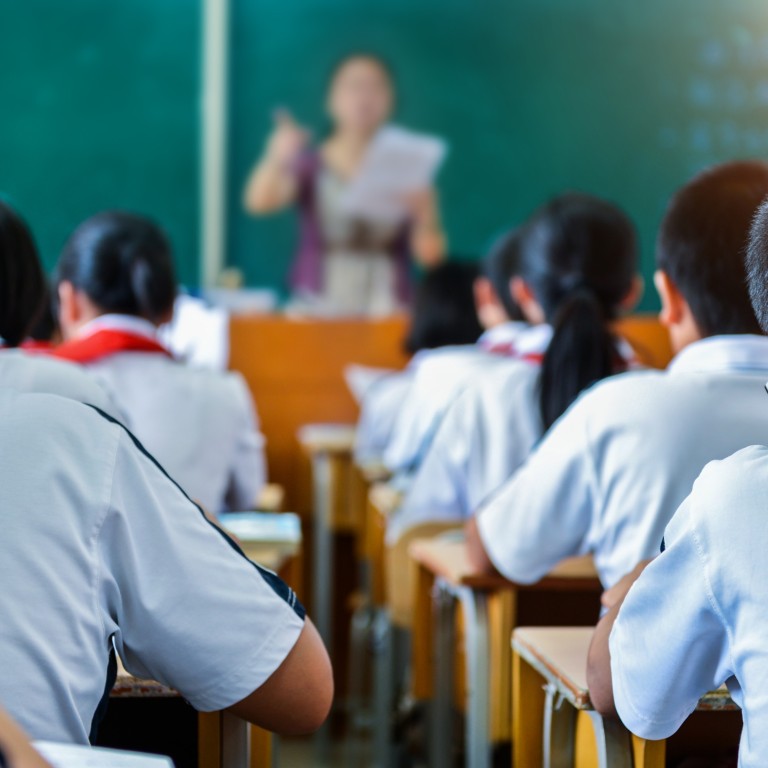
Number of students in Hong Kong international schools rises 18% to highest level since 2013
- But the proportion of students in government and aided schools dropped 12 per cent over same period to a record low, latest census shows
The number of students in Hong Kong’s international schools has reached an 11-year high, but the proportion of those in local institutions dropped to a record low amid a shrinking pupil population, official data has shown.
The latest census report said international schools recorded an 18 per cent increase in the number of students over the current academic year compared with 2013, with government and aided ones seeing a 12 per cent decline over the same period.
An international school education consultant said the figures reflected a drift in student enrolment. A subsidised-school council, meanwhile, urged authorities to align the grading system of the local university entrance exams with the international ones in a bid to let more high fliers obtain top scores.
The figures are based on a headcount exercise conducted in kindergartens, primary, secondary and special schools last September.
The city’s overall school enrolment stood at 799,025 students in the current academic year, a drop of about 11 per cent from 894,071 in 2013-14.
Among them, those studying in primary and secondary international schools reached an 11-year high of 42,074 from 35,580 in 2013-14.
During this period, seven more international primary and secondary schools were set up in Hong Kong, bringing the total number to 79, some of which are run by the same operators.
According to the Education Bureau, the city’s international school sector is designed to meet the needs of non-local families, particular cultural or linguistic groups, or students who do not wish to sit for local examinations.
Non-local students made up 81 per cent of the international schools’ enrolment in 2013, but only 65 per cent in the current school year.
For government and aided primary and secondary schools offering local curriculum, the number of students fell consecutively in the recent five years to an 11-year low of 511,790, a 12 per cent drop from 583,558 in 2013-14.

The number of government and aided schools has seen a slight drop during the same period from 849 to 847.
Meanwhile, the number of students in semi-private schools, those under the direct subsidy scheme (DSS) which heavily rely on subsidies from the government but can charge tuition fees, has dropped 3 per cent over the same 11-year period to nearly 62,000.
Ruth Benny, founder of education consultancy Top Schools Asia, said the figures showed a steady increase in locals and those newly arriving from mainland China who either transferred to or chose international schools from the outset.
“The significant rise in the number of students from working class or mainland families attending private schools is likely to continue, with several private schools being established to cater for this demographic,” she said.
She added she also noticed students from renowned local schools chose to transfer to prestigious international institutions, which also had capacity to accommodate them.
Lee Yi-ying, a secondary school principal and chairwoman of the Subsidised Secondary School Council, said some parents thought international schools could offer their children better preparation and exposure, which she described as a misunderstanding.
“Some parents plan to send their children to study overseas or want to widen their international horizons, but our Diploma of Secondary Education [DSE] also offers the syllabus which also lets students cope with the curriculum in overseas education,” she said, referring to the city’s university entrance exam.
But she urged education authorities to consider loosening the grading system to allow more students, particularly the high fliers, to obtain top scores. She said the top grade percentage of other international exams was higher than the local one.
For example, about 14 per cent of the candidates sitting the biology international A level examination scored A*, while only 2 per cent of those undertaking the DSE one got the highest 5**.
She said education authorities should also keep on refining the DSE curriculum and promote it to the public and overseas. She noted that some parents including those from the mainland always thought the DSE was more difficult to handle than the international curriculums.

